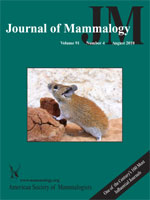The contemporary geographic distribution and interrelation of populations result from landscape structure, habitat specificity, and historical climate fluctuations. We examined the impact of Pleistocene environmental history on mitochondrial genealogies of the water shrew (Sorex palustris) in montane systems of western North America to test hypotheses concerning historical recolonization. Our main focus lies on the regional scale of the Pacific Northwest and the extent to which disjunct populations are associated with discrete, isolated mountains. We analyzed 87 specimens from the entire western portion of the species range to assess broadscale genealogical relationships. We then examined 61 individuals selected from 21 specific high-elevation sites in the Pacific Northwest to test whether these populations are structured in accord with distinct montane regions. Across western North America in general the relationship among S. palustris lineages is unresolved, suggesting a recent and rapid radiation from a common ancestral population. In the Pacific Northwest we found evidence of clades that are uniquely associated with individually isolated montane regions, clades that are distributed across several montane regions, and distinct clades that co-occur within the same montane region. We conclude that populations of S. palustris in western North America are derived from a single, southern, late-Pleistocene refugium. We also suggest that lineages shifted geographically by following the most northerly postglacial expansion of the boreal forest system.
How to translate text using browser tools
16 August 2010
Influence of montane isolation and refugia on population structure of Sorex palustris in western North America
Christopher M. Himes,
G. J. Kenagy
ACCESS THE FULL ARTICLE

Journal of Mammalogy
Vol. 91 • No. 4
August 2010
Vol. 91 • No. 4
August 2010
boreal forest
fossil records
historical biogeography
North America
Pacific Northwest
Pleistocene environmental history
water shrew




